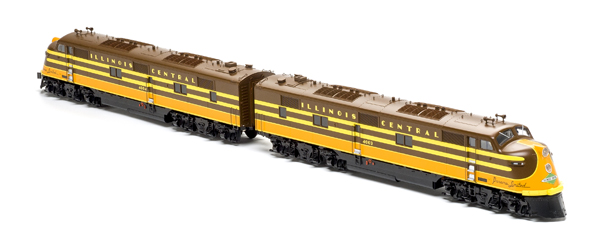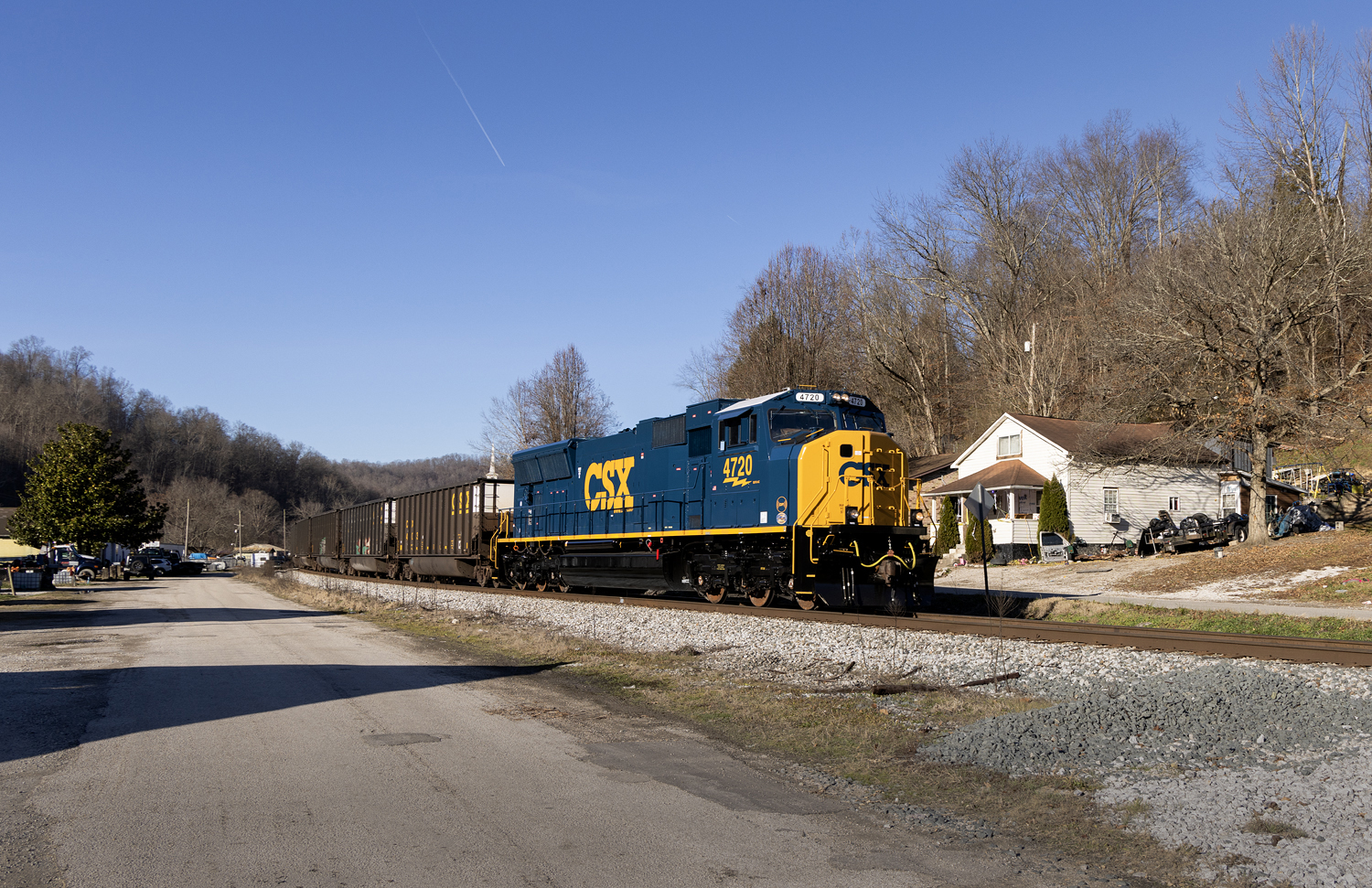O gauge E6 A-A set by Lionel
Price: $999.99 (6-84650) Cmd low: 2.9 smph Conv low: 7.2 smph High Speed: 67.8 smph Drawbar pull: 1 pound, 8 ounces per A unit. Features: Two can-style motors in each unit, Lionel Legacy command and sound system, capable of conventional, TMCC, LionChief Universal Remote and Lionel app control; smoke units in each locomotive, coil coupler on front of rear units Current production: Atlantic Coast Line, Chicago & North Western, Florida East Coast, Illinois Central, Kansas City Southern, Louisville & Nashville, Milwaukee Road, Santa Fe, and Union Pacific Website: www.Lionel.com.
The Electro-Motive Division of General Motors set the style for American passenger locomotives for most of the 20th century. While those locomotives were all streamlined and designed to complement the sleek lines of modern passenger equipment, some designs were more successful than others. I nominate the E6 as the most stylish passenger diesel of the steam-diesel transition era.
The locomotive’s angled nose and smooth exterior made it appear fast while sitting still. Follow-on versions, the E7 and E8, may have had similar bodies, but the angle of their noses was less severe, making the units look like long freight engines.
The E6 (The “E” originally stood for 1,800 horsepower) is a 2,000-horsepower unit with two EMD 567 prime movers. The model was built from 1939 to 1942, with 91 A units and 26 B units being finished for 16 railroads. If the U.S. had not entered World War II, production might have lasted longer.
Opening the box
The Illinois Central’s chocolate-and-orange livery, as well as the yellow accents and the famous green diamond on the nose are colorful without being garish. Lionel’s rendering of one of my favorite passenger liveries is outstanding. When the cradle slid out of the box, all I could say was, “Wow!”
I couldn’t find any flaws in the paint application. The mosaic of colors provided eye candy and highlighted rivet heads that might have been lost in more somber decoration.
The script “Panama Limited” on the front sides and the classic Illinois Central deco-style font, high on the side, clearly come from an era before cost-cutting and train-off petitions. But, you ask, “The paint is one thing, how is the detailing?” Superb.
The lead A unit’s pilot is black and is closed (no coupler), while the rear unit’s pilot is open and sports a coupler. You’ll find grab irons located on the yellow band above the pilot. The angular nose mounts two lamps: a headlight and a strobe light. There are small, curved number boards on the upper nose. These have backlit engine number and classification lights. The cab is illuminated, and there are two crewmen inside.
As touched upon, there is plenty of rivet and seam detail to observe on the shell.
The cab’s side windows simulate a two-pane frame. The door has a window, and there are three silver kickplates affixed between the grab irons. The bottom steps are attached to the truck. There are three screens on the upper third of the side. Below them are two double-pane windows as well as a single-pane window near the rear.
Another crew access door is in the middle of the body. The door has grab irons and a single kickplate. A step is attached just above the fuel tank. On the rear corner are grab irons and truck-mounted steps for use by hostlers positioning the locomotive.
The roof is classic. Two horns are located above the cab. Behind them are a number of add-on lift rings for easier interior access by O scale maintenance crews. There are eight short stacks, four each between radiator grills on either side of the roof.
Control panel
Both also have fan-driven smoke units that deliver good output and have fluid reservoirs with plenty of capacity. The refill spot for the smoke units is in the middle of the roof. I found the access a bit tight, but the model includes a long syringe for precise filling. This helps prevent making a mess on the shell.
Control and battery access is through a hatch at the rear of the roof. You’ll find this below the rear steam generator exhausts. If you find this arrangement difficult to open and secure, you may want to consider getting an Emery board and doing a bit of filing for a better fit.
The rear looks good with a diaphragm connector to the sister locomotive. There are grab irons on the rooftop as well.
On the test track
If you wanted extras, this Lionel model has them! From my perspective, this engine is the Burger King of O gauge because you can have running it your way!
You can operate this engine duo in conventional mode (with enhanced slow speed capability). You can also run it with Lionel’s older TrainMaster Command Control system. And yes, Lionel’s Legacy system can control the model. “But,” as the commercials say, “wait, there’s more!” The diesel set also is also equipped with Bluetooth for use with either the Lionel app, or (stroke of genius here) the LionChief Universal Remote!
The Legacy RailSounds are located in the lead unit, and they are deep, robust, and varied. The sound effects are uniformly terrific. You also have a horn that you can fine tune with your own signature horn toots! You can experience an array of crew talk that will make your running fun (and probably make visitors smile).
Both units have two motors. The motors power two axles on each of the three-axle trucks.
Speed performance was great. Our conventional low speed was 7.2 scale miles per hour and command mode was 2.9 scale miles per hour. High speed was 67.8, but that was holding back to avoid flying off the test track in a curve!
Drawbar pull was 1 pound, 8 ounces per A unit, so this duo should be capable of heavy passenger trains (or freight, for that matter).
Now you are wondering, “Two A units? Can you run them individually?” Yes, but with one or two qualifications.
The training A unit delivered terrific speed performance, and it was very responsive to commands from the Universal Remote. However, I was unable to get it to respond to commands from the Lionel app. I tried to identify and link the lone unit with two different phones with the app but failed to get it done. Also, there is no sound system in independent operation. Otherwise it is a good candidate for running the Second Section of the Panama Limited, or whatever Illinois Central train you choose.
This E6 A-A set looks great, and the locomotives deliver excellent performance. They could become the pride of your O gauge fleet.














